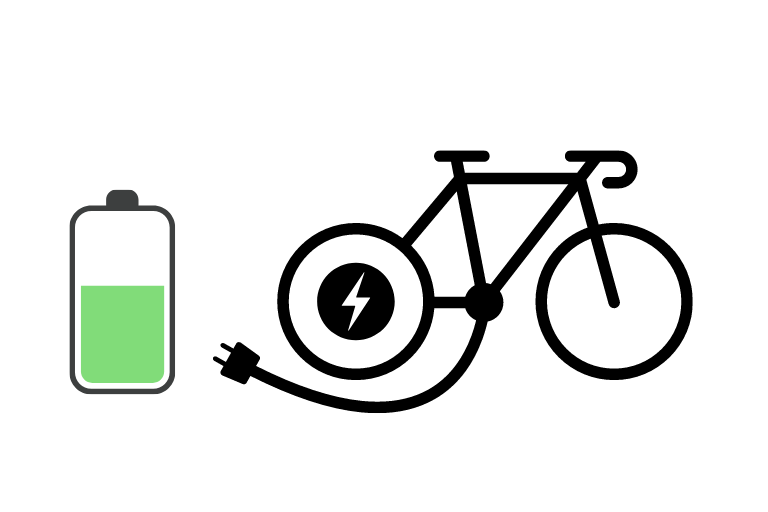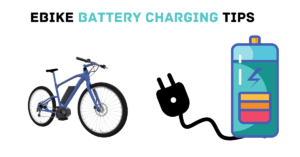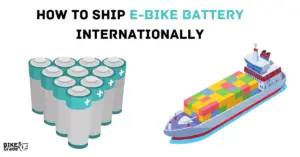Ebike battery percentage chart
An ebike battery percentage chart is a visual representation of the percentage of charge remaining in a battery over time. It helps riders understand how much charge is available for use and how long a battery will last before needing to be recharged.
| Battery Percentage | Estimated Range |
|---|---|
| 100% | 50 miles |
| 90% | 45 miles |
| 80% | 40 miles |
| 70% | 35 miles |
| 60% | 30 miles |
| 50% | 25 miles |
| 40% | 20 miles |
| 30% | 15 miles |
| 20% | 10 miles |
| 10% | 5 miles |
| 0% | 0 miles |

Four Key Points of an Ebike Battery Percentage Chart:
- A chart provides a visual representation of the remaining charge in a battery over time.
- It helps riders understand how much charge is available for use and how long a battery will last before needing to be recharged.
- It typically shows the battery percentage on the vertical axis and time on the horizontal axis.
- It can also provide information about the battery’s capacity, voltage, and other important characteristics.
An ebike battery percentage chart is an essential tool for riders who want to maximize their battery life and ensure they are properly charged up for their next ride. It allows riders to monitor the charge level of their battery and be aware of when it needs to be recharged in order to ensure the safest and most convenient ride possible.
Applications of Ebike Battery Percentage Chart
The ebike battery percentage chart is an essential tool for the performance of electric bicycles. The chart helps to accurately measure the battery’s charge level, enabling the rider to plan their route accordingly. Additionally, the chart can be used to compare different battery types and identify any potential issues with battery performance.Introduction to Ebike Battery Percentage Chart
An ebike battery percentage chart allows a rider to monitor their battery level while riding an electric bike. This chart helps riders to get an idea of how much charge is left in the battery and how much energy is left to power the ebike.
Benefits of using a Battery Percentage Chart:
- Allows riders to plan their rides more efficiently
- Allows riders to determine when to recharge their ebike battery
- Eliminates anxiety around battery life
- Saves time and energy by allowing riders to plan their trips with more precision
The ebike battery percentage chart is an important tool for riders to determine the amount of charge left in their battery. This chart can help riders to plan their rides accordingly and make sure they have enough power to reach their destination. Additionally, it eliminates the anxiety of running out of battery power and ensures a safe and enjoyable ride.
Types of Ebike Battery Percentage Charts
The ebike battery percentage chart is an important tool to understand the level of charge within the battery. It helps to calculate the remaining range and the estimated time of usage of the bike. There are three types of ebike battery percentage charts:
- Linear Percentage Chart – This chart shows the battery level in a linear format with each percentage point occupying an equal amount of space on the chart. This chart is the easiest to interpret, but it does not provide an accurate indication of the battery charge rate.
- Logarithmic Percentage Chart – This chart uses a logarithmic scale to represent the battery percentage. This chart provides a more precise indication of the battery level and the rate of charge.
- Exponential Percentage Chart – This chart uses an exponential scale to represent the battery percentage. This chart is the most accurate of the three and provides the most detailed information about the battery level and the rate of charge.
Understanding the type of ebike battery percentage chart can help riders to better plan their rides and maximize the life of their battery. It is important to select the right type of chart to ensure that riders have an accurate measure of the amount of charge in their battery.
Uses of Ebike Battery Percentage Charts
The ebike battery percentage chart is a valuable tool for ebike riders, as it provides them with accurate and up-to-date information on the charge level of their battery. This helps them to manage their battery life and plan their rides accordingly.
Some of the uses of ebike battery percentage charts include:
- Monitoring battery usage: The chart provides riders with an accurate view of how their battery is performing, allowing them to adjust their riding habits to reduce energy consumption.
- Comparing battery performance: The chart can be used to compare the performance of different ebike batteries, helping riders choose the battery that best suits their needs.
- Planning rides: Knowing the exact charge level of their battery allows riders to plan their rides more efficiently, ensuring that they have enough charge to complete their journey without running out of power.
- Maintaining batteries: The chart helps riders identify any potential issues with their battery, such as overcharging or low charge levels, allowing them to take steps to address the issue.
Overall, the ebike battery percentage chart is an invaluable tool for ebike riders, providing them with up-to-date information on their battery charge level and helping them to plan their rides accordingly.
Benefits of Using an Ebike Battery Percentage Chart
Using an ebike battery percentage chart comes with many benefits for riders. Such a chart can help riders maximize their battery life and get the most out of their rides. Here are just a few of the benefits of using an ebike battery percentage chart:
Monitor Battery Level:
The biggest benefit of using an ebike battery percentage chart is that it helps riders monitor their battery level and make sure they don’t over-exert the battery. This is important to ensure the battery lasts through long rides, and that riders don’t get stranded in the middle of a ride.
Track Battery Life Span:
An ebike battery percentage chart can also be used to track battery life span over time. This helps riders identify when it’s time to replace the battery or adjust their riding habits.
Conserve Battery:
Knowing the battery’s exact charge level can also help riders conserve battery life and make sure they don’t deplete the battery too quickly. This is especially important for riders who tend to ride more aggressively or over longer distances.
Maximize Performance:
Finally, an ebike battery percentage chart can be used to maximize performance and get the most out of every ride. Knowing the exact battery level can help riders plan their rides and choose routes that they know they can complete while still having enough battery power to get back.
Overall, an ebike battery percentage chart is an invaluable tool for riders, as it helps them monitor, track, conserve, and maximize performance for the most enjoyable and successful ride.
Information Included in an Ebike Battery Percentage Chart
An ebike battery percentage chart is a graphical representation of the remaining battery life on an electric bike. It provides information about the battery’s current charge level and the estimated range or time remaining to ride. The chart also helps riders to understand how much power they need to conserve for a safe ride.
An ebike battery percentage chart typically includes the following information:
- Remaining battery life in percentage
- Estimated range or time remaining to ride
- Battery charge level
- Warnings about the battery’s current charge level
- Recommendations for conserving power
- Instructions for charging the battery
Limitations of Ebike Battery Percentage Charts
Ebike battery percentage charts can be a useful resource to help riders understand how much charge is remaining in their battery. However, there are certain limitations to using these charts.
- Accuracy: The accuracy of a battery percentage chart can vary depending on the type of battery and the age of the battery. Therefore, it is important to use a chart specific to the type and age of the battery.
- Limited Range: Battery percentage charts are typically only accurate within a certain range, for example between 10 and 90 percent charge. Therefore, if the battery is below 10 percent or above 90 percent, the chart may not be suitable.
- Variation in Output: Some batteries may output different voltages depending on the temperature and load. Therefore, a chart that is accurate for one battery could be inaccurate for another.
- Charging/Discharging Cycles: Over time, the capacity of a battery can change due to charging and discharging cycles. This can also affect the accuracy of a battery percentage chart.
In conclusion, while battery percentage charts can be a useful resource, they do have certain limitations that should be considered. It is important to use a chart that is specific to the type and age of the battery and to be aware of the potential inaccuracies.
FAQ
How do I know the percentage of charge in my ebike battery?
What information does an ebike battery chart provide?
Is an ebike battery chart accurate?
What is the best way to use an ebike battery chart?
How often should I use an ebike battery chart?
Conclusion:
ebikes are an increasingly popular mode of transportation, and an ebike battery percentage chart is an essential tool to help riders maximize the life of their batteries and ensure a safe and pleasant ride. Not only does it provide an easy visual representation of the remaining charge in the battery, but it also offers important insights about the capacity, voltage, and other characteristics of the battery.






